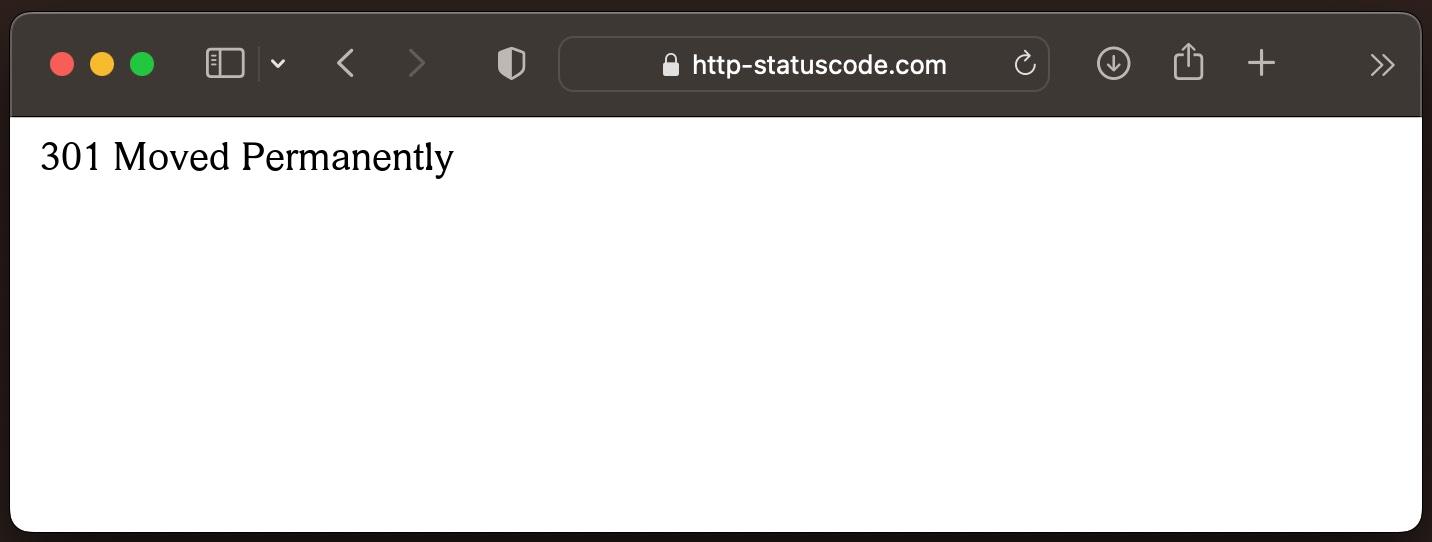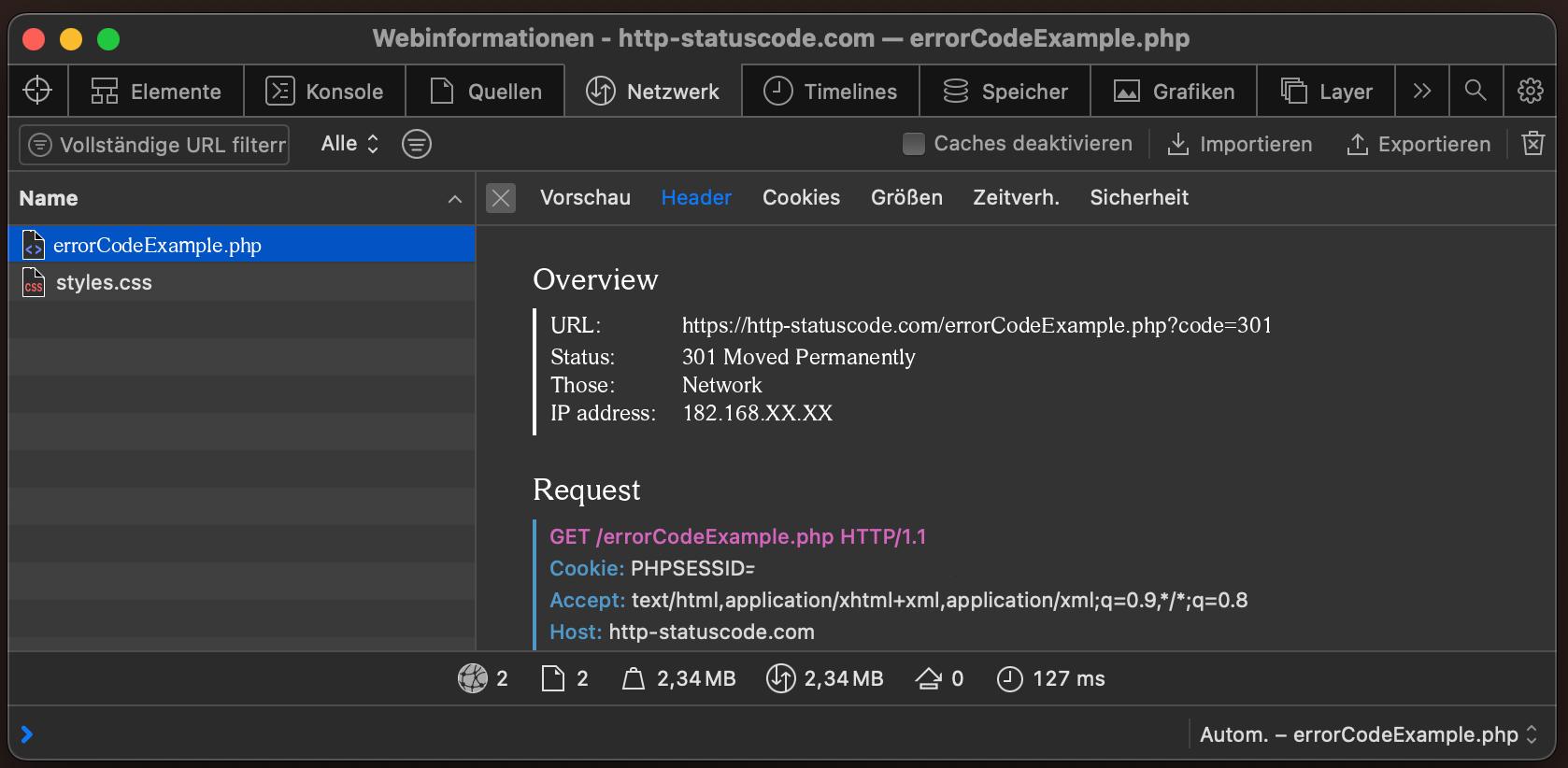301
Moved Permanently
General explanation of the 301 status code
The HTTP status code 301 Moved Permanently indicates that the requested resource is permanently available at a new URL. When a client, such as a browser or search engine, receives this response, it is automatically redirected to the new address. At the same time, the client remembers the new URL so that future requests can be sent there directly. This status code is often used when websites are restructured or content is moved to ensure that users and search engines use the updated paths. For the end user, this usually happens unnoticed in the background, as the redirection takes place automatically. From a technical perspective, the 301 Moved Permanently redirect is important to transfer search engine rankings and traffic to the new URLs without losing existing links. Used correctly, it is a useful tool for maintaining and optimizing websites.
Specification of the HTTP status code 301
The 301 Moved Permanently status code indicates that the target resource has been assigned a new permanent URI and any future references to this resource ought to use one of the enclosed URIs. Clients with link-editing capabilities ought to automatically re-link references to the effective request URI to one or more of the new references sent by the server, where possible.
The server SHOULD generate a Location header field in the response containing a preferred URI reference for the new permanent URI. The user agent MAY use the Location field value for automatic redirection. The server's response payload usually contains a short hypertext note with a hyperlink to the new URI(s).
Note: For historical reasons, a user agent MAY change the request method from POST to GET for the subsequent request. If this behavior is undesired, the 307 (Temporary Redirect) status code can be used instead.
A 301 Moved Permanently response is cacheable by default; i.e., unless otherwise indicated by the method definition or explicit cache controls (see Section 4.2.2 of [RFC7234]).
Source / Quote by: The 301 Moved Permanently HTTP Status Code is specified by section 6.4.2 of RFC7231.
HTTP-Protocol
How to throw a 301 statuscode with PHP?
To throw the HTTP status code 301 on a web page, the PHP function http_response_code can be used. The syntax is as follows: http_response_code(301) (PHP 5 >= 5.4.0, PHP 7, PHP 8)
Test the 301 HTTP status code
In order to be able to display the HTTP status code (in this case 301 Moved Permanently) and other information on the client side, the development console must be opened with F12. Afterwards you have to navigate to the tab "Network". Now you can open the page, in the network tab you should see the web page (example index.php). This must be selected and then the Herder section must be selected. Here the user will see the following result:

URL: https://http-statuscode.com/errorCodeExample.php?code=301
Status: 301 Moved Permanently
Those: Network
IP address: XX.XX.XX.XX

Browser compatibility of the 301 status code
| Chrome | Yes |
| Edge | Yes |
| Firefox | Yes |
| Opera | Yes |
| Safari | Yes |
| Chrome Android | Yes |
| Firefox for Android | Yes |
| Opera Android | Yes |
| Safari on iOS | Yes |
| Internet | Yes |
| WebView Android | Yes |
Constants in programming languages
HttpStatusCode.MovedPermanently
http.StatusMovedPermanently
Response::HTTP_MOVED_PERMANENTLY
httplib.MOVED_PERMANENTLY
http.client.MOVED_PERMANENTLY
http.HTTPStatus.MOVED_PERMANENTLY
:moved_permanently
